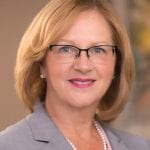Education
Jamie Birge was searching for a piece of wood to knock on.
Massachusetts College of Liberal Arts (MCLA), which he serves as president, had essentially made it through a very different fall semester with only a handful of positive cases of COVID-19. He considers this a victory for his institution, and a clear indication that the many protocols put in place were effective.
“For the full semester, our positive rate was 10 times lower than the Commonwealth’s positive rate, and each week we outperformed our host city [North Adams], the county, and the Commonwealth,” he explained. “We were actively hunting the virus through our testing protocol, and through our tracing protocol, we made sure there was no spread. I think we had six cases, and in each of those cases, none of them spread on campus, because we were able to identify the virus through testing, we were able to either quarantine or isolate individuals, and we went to remote learning after Thanksgiving, which turned out to the best time to do that because there was an uptick in positive cases in Berkshire County, and our students were already off campus learning remotely. From a numbers perspective, we did extraordinarily well.”
The semester was a success on many levels, he went on, but for the students living on campus in singles or in off-campus housing, it certainly wasn’t the “typical residential college experience,” he noted, adding that those on campus were all in single rooms, and access was limited between residence halls. “You couldn’t go visit other people.”

Jamie Birge
“Even in the era of online and remote learning, students still want to be on campus; they want that traditional experience.”
Focusing on the future, Birge is obviously looking forward to the day when the school can again offer that full experience. He’s not sure when that will happen — certainly not before next fall and perhaps not even then — but there are signs of encouragement, he said, referring to everything from the introduction of vaccines to the projections for enrollment for next September.
“The latest I’ve seen for the 2021 cycle is that we’re within 3% of the pre-pandemic numbers, so we’re feeling good about that,” he said, noting that, by this time of the year, many students have already committed to where they will be attending school in the fall, although the next four or five weeks are critical. “I think that’s a soft figure, and, overall, we think this is going to be a multi-year emergence to return to where we had been. But I’m encouraged by the fact that we’re only off 3%.”
He said that number seems to be consistent with what the other eight state schools are reporting, although there is some variation. And time will tell if those numbers hold up as the vaccines are rolled out and their effectiveness is gauged.
Meanwhile, beyond the all-important process of rebuilding enrollment, colleges and universities will face other challenges, said Yves Salomon-Fernández, president of Greenfield Community College (GCC), especially the need to “adjust, adapt, and evolve,” as she put it, to effectively prepare students for what will be a changed landscape when it comes to the workforce and how work is done.
“For next year, we have to very intentional about our learning because the world we’ll be returning to, post-COVID — and with the vaccines, which will be a game-changer — is going to different from the one we had become accustomed to before COVID,” she explained. “We know that there are a number of jobs that won’t be returning.”
Elaborating, she said GCC will lean heavily on a panel it created called the Future of Work Advisory Committee, comprised of area business leaders across several sectors, including healthcare, hospitality, financial services, manufacturing, and others.
“They help us keep a pulse on what’s changing, what they anticipate, and what the outlook is, so we can align our new academic programs, and also adjust our existing programs to meet their demands,” she noted. “Also, it will be critically important for us to get a sense of what the workplace will look like and the skills that employers will be looking for.”
In this respect, she said colleges and universities, at least those with an eye on the long term, will be taking lessons from evolved companies that looked at the marketplace and how it was changing and began to adjust accordingly.
“These companies started asking themselves, ‘what are the market needs today that we can adapt to and meet — and what will be the unmet needs in the future, and how can we best position ourselves to meet them?’” she explained, adding that colleges have to do the same.
As for enrollment, the lifeblood of any college or university, area schools have been battling not only the pandemic, but demographics in the form of smaller high-school graduating classes. The two forces collided with considerable force this past September, with enrollment down as much as 20% at some area schools (that was the number at MCLA) and 15% at most of the institutions, with many high-school graduates taking a gap year and many already in college simply taking a break.
The question hanging over the industry involves that matter of pent-up demand and whether there will be good amount of it when the product is a college education.

Yves Salomon-Fernández
“For next year, we have to very intentional about our learning because the world we’ll be returning to, post-COVID — and with the vaccines, which will be a game-changer — is going to different from the one we had become accustomed to before COVID.”
Birge believes there will be such demand, although, as he said, it might be the fall of 2022 or 2023 before pre-pandemic levels return.
“From the information we collect from students, the students want to return to campus,” he told BusinessWest. “Even in the era of online and remote learning, students still want to be on campus; they want that traditional experience.”
Noting that enrollment at community colleges usually rises during times of recession and high unemployment, Salomon-Fernández noted that this past fall semester was an exception to that rule, both because of large amounts of assistance to those who became jobless and the inability to attend in-person classes. She believes the vaccines, and the eventual end to those stimulus benefits, will change that equation.
“I think enrollment will start picking up in the fall of 2021,” she said. “In the long term, we can’t keep borrowing against ourselves — the national debt is the highest it’s been since the Great Depression. This is not sustainable, and we expect that, as the vaccine becomes available, the government subsidies will decline, and people will have ample incentive to get back to work — and they’ll need the skills to enter, continue in, and thrive in the job market.”
Looking ahead to the spring, Birge said MCLA will operate very much as it did in the fall, but with even more testing due to the colder weather at the start. Spring break will be eliminated, and an extra day will be tacked on to President’s Day weekend.
Like he said, the spring will be a lot like last fall. It will be different, though, if the vaccines work as the experts project they will, because the finish line, when it comes to the pandemic, will be much closer.
“Everyone is down right now when it comes to enrollment,” Birge said. “But we’re feeling a little bit of encouragement that it’s better than we thought it was going to be, although it’s certainly not what we want it to be.”
—George O’Brien
 Entering a new year, there are always question marks about the economy and speculation about the factors that will determine just what kind of year it will be. For 2021, there are far more questions — and fewer definitive answers — and the speculation comes in layers. A great many of them. Much of this speculation involves the pandemic and, with vaccines becoming available to ever-greater numbers of people, whether we are truly seeing light at the end of the tunnel, the beginning of the end (of the pandemic), or any of those other phrases now being used so frequently. But there are other things to speculate about as well, including what the landscape will look like when and if things to return to normal, or a ‘new normal,’ another phrase one hears a lot these days. Will the jobs that have been lost come back? Will people pick up old habits regarding going to restaurants, the movies, the doctor’s office, or sporting events? Will businesses return to their offices? And will their offices be the same size and in the same community? Another phrase you’re hearing — and will read in the stories that follow — is ‘pent-up demand.’ Many businesses, from eateries to colleges and universities to medical practices, are counting on it, but will it actually materialize? These are all good questions, and for some answers, we turned to a panel of experts for a roundtable discussion, without the roundtable. Collectively, they address the question on everyone’s minds: what is the outlook for 2021?
Entering a new year, there are always question marks about the economy and speculation about the factors that will determine just what kind of year it will be. For 2021, there are far more questions — and fewer definitive answers — and the speculation comes in layers. A great many of them. Much of this speculation involves the pandemic and, with vaccines becoming available to ever-greater numbers of people, whether we are truly seeing light at the end of the tunnel, the beginning of the end (of the pandemic), or any of those other phrases now being used so frequently. But there are other things to speculate about as well, including what the landscape will look like when and if things to return to normal, or a ‘new normal,’ another phrase one hears a lot these days. Will the jobs that have been lost come back? Will people pick up old habits regarding going to restaurants, the movies, the doctor’s office, or sporting events? Will businesses return to their offices? And will their offices be the same size and in the same community? Another phrase you’re hearing — and will read in the stories that follow — is ‘pent-up demand.’ Many businesses, from eateries to colleges and universities to medical practices, are counting on it, but will it actually materialize? These are all good questions, and for some answers, we turned to a panel of experts for a roundtable discussion, without the roundtable. Collectively, they address the question on everyone’s minds: what is the outlook for 2021?












